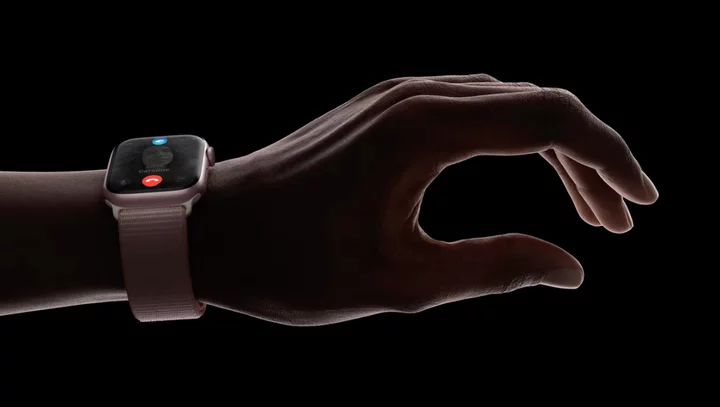When it comes to projectors, "portability" is a flexible and evolving concept. Three decades ago, models that weighed about 12 pounds and fit in an airplane overhead bin were considered fully portable—in fact, they were the smallest and lightest available. Today, they're not, except for some that are designed for moving no farther than from one room to another. The vast majority of what we now consider portable projectors are 5 pounds or less. Some are mere ounces—small and light as a cell phone, and also perfect phone companions. No matter where you happen to be, they'll let you show your photos and videos, or stream a movie, at a larger size than you can get on a tablet.
The wide range in size and weight for the best portable projectors today goes hand-in-hand with large ranges for features—from brightness level, to audio volume and quality, to presence or absence of built-in batteries or smart TV features. To help you wade through all the options, we've narrowed the portable projector world down into categories by size, shape, and weight. Below are our lab-tested top picks for each category, followed by detailed explanations of the categories and the key points you should keep in mind when searching for the best portable projector. For dessert, we end with a detailed spec breakout of our top choices.
Portable projectors come in a wide variety of sizes, shapes, and weights, which are among the most important factors in deciding whether they fit the applications you have in mind for them. Quite simply, if a projector is bigger or heavier than you're willing to lug around, it's not the right model for you. The same three factors are also closely tied to capabilities—bigger, heavier models tend to be brighter, for example, and often deliver more robust audio, two factors that also determine the application they're best suited for.
So a good place to start your buying search for the best portable projector is to divide the universe of portable projectors into categories by size, shape, and weight. To help you decide which category you should be looking in, we'll start with the smallest, lightest projectors and work our way up, adding in additional factors for defining categories where appropriate, and covering what you need to know about key specs along the way.
Note that although the names we're giving the categories are widely used, individual manufacturers are free to define them however they like. So if a model has a term like "Pico" or "Pocket" in its name, it will usually fall into the category as we're defining it here, but not always. We've seen some "pico projectors" that are way too big to fit in any pocket. Also keep in mind that the categories tend to fade into each other at the extremes. So, if you're thinking you might want a model at the biggest, heaviest end of one category, you should also be looking at the smallest, lightest end of the next step up.
Pico Projectors: The Smallest and Lightest
Pico projectors, or pocket projectors, are the smallest, lightest category for portable projectors. Most weigh well under a pound, but some are a pound plus a few ounces. Their defining characteristic is that they can fit in a pocket, which could mean fitting easily in a shirt pocket or just barely making it into a large overcoat pocket. They tend to have low brightness (less than 100 ANSI lumens for the smallest ones), and typically include onboard batteries. They also tend to have low resolutions (as low as 640 by 360 pixels), but their low brightness ensures you won't usually notice the low resolutions, because you'll need to keep the images small enough to hide any loss of detail or sharpness that might mar image quality compared with higher resolutions.
(Credit: ViewSonic)The smallest projectors in this category are ideal choices if you want a cell phone companion that takes no more effort to bring with you than carrying a second phone. It will give you a somewhat-larger image than you can get from a tablet, whether for showing off photos or streaming movies, and if you download a movie to your phone before getting on a plane, you're all set for the flight. The largest will be a better fit for a backpack or briefcase. However, they'll give you a little higher brightness for a bigger picture or for viewing at a higher level of ambient light. For road warriors, they're perfect for giving desk-side presentations to one or two people from files stored on a cell phone, a memory card, or USB memory. For home entertainment, they'll similarly throw a large-enough picture for just a few people, but you'll probably need an external Bluetooth speaker to go with them.
Palmtop Projectors: Fitting in Your Hand
What you personally consider a palmtop projector will vary depending on how big your hands are. But as a rule, these models have a square or near-square footprint (like your palm itself) and a relatively flat shape, so they'd be stable sitting in your palm. (Projectors shaped like towers aren't palmtops.) For our purposes, we limit size to no more than about 5 inches on the longest side. Typical weights are well under 2 pounds, and sometimes less than 1 pound; rated brightness is typically in the 200-to-400-ANSI-lumen range; while native resolution is often as high as full HD (1,920 by 1,080 pixels). At this writing, few projectors in this category offer built-in streaming features, but as this capability keeps migrating down to ever-cheaper projectors, that may change.
(Credit: AAXA)Models in this category also tend to have built-in batteries and are small enough to slip easily into a briefcase or backpack. Their higher brightness relative to pocket projectors allows them to project larger images, while maintaining picture quality in any given level of ambient light. That makes them better-suited to viewing by several people at once rather than just two or three—whether for business presentations or for showing off photos or watching movies. As with pocket models, the audio tends to have low volume and be of low quality.
Oversize Palmtops: Bigger and More Versatile
The next step up in weight category divides into three distinct groups. The first is oversize palmtops. (The others are mainstream mini projectors and a special-purpose variation on mini projectors. We'll cover both in the next two sections.) As you'd guess, oversize palmtops look like bigger versions of palmtops. Widths and depths can be up to a little more than 8 inches, and weights are typically between 2 and 4 pounds. Native resolution is typically 1,920 by 1,080 pixels, but at least one offers 4K (3,840 by 2,160 pixels) at this writing, while rated brightness is typically between 400 and 800 ANSI lumens, which can give you a big-enough picture to see all the detail 1080p promises.
Most, but not all, oversize palmtops include built-in batteries so you don't always have to connect to a power outlet. When using battery power, however, they typically drop brightness significantly to get a longer battery life. Depending on the projector, you may or may not be able to set it for the highest brightness, even when using battery power. But if you can, don't expect the battery to last long.
In addition to being well-suited to the same sort of applications as palmtop projectors, but for bigger audiences or brighter rooms, oversize palmtops can also serve as business projectors for small conference rooms. Models that handle movies and video well are good choices for casual viewing at home, particularly for ad hoc setup as needed. Some even include built-in Android TV or other smart TV choices for streaming.
Mainstream Mini Projectors
The best mini projectors have changed over the years. Originally, they had traditional lamp-based designs and weights of less than about 4 pounds, as distinct from the slightly lighter categories mentioned above that use solid-state light sources—mostly LEDs. Today, however, solid-state light sources have completely taken over the mini projector weight class, which covers the same 2-to-4-pound range as oversize palmtops. The two categories also offer similar ranges for brightness, native resolution, and most other features (though at this writing, we have yet to see a 4K mini projector). As with oversize palmtops, most include built-in rechargeable batteries.
(Credit: Anker)Where the two categories differ is in their shape and in some key features that make the best mini projectors a better fit for home entertainment. Although no particular shape defines a mainstream mini projector, most are towers, like models in the Anker Nebula Capsule series. The extra height makes room for relatively robust audio systems, which deliver higher volume and better sound quality in almost every case than any oversize palmtop. Most couple that with built-in smart TV features for streaming—most often by way of Android TV. None of this hurts their usability for business presentations, and some types of presentations can benefit from the better audio. But the extras also mean these models will do a better job than most oversize palmtops for watching movies. Many can also double as Bluetooth speakers.
Inexpensive Single-LCD Mini Projectors
A relatively new category of mini projector is—for lack of a better term—the inexpensive single-LCD projector. Most projectors that qualify as portable in any sense use a single DLP chip for their display, at least partly because it's easier to keep the weight down when using only one chip. However, they show only one primary color on screen at a time, rotating though the primaries in sequence, and leaving it to your brain to combine the primaries into all the colors you see.
This works fine for everyone most of the time, and for some people all of the time. However, an eye movement or an object moving on screen is enough for bright areas to break up into little red/green/blue flashes known as rainbow artifacts. And for those who both see these easily and find them annoying, that can be a problem.
(Credit: M_a_y_a/Getty Images)One way to avoid these artifacts is to use three chips, as with the three-LCD chip design that's standard for most LCD projectors. The three chips put all three primaries on screen at once, and let your brain integrate the colors over space rather than sequentially over time. But three-chip designs are expensive, and tend to add weight. Another alternative, which these lightweight single-LCD models offer, is to use a single large LCD with enough individual cells to deliver the resolution you need. Cover the cells in a 5,760-by-1,080-pixel matrix with red, green, and blue filters, so each set of red, green, and blue gives you a single pixel, and the image resolution works out to 1,920 (5,760 divided by 3) by 1,080 pixels. This single-LCD approach won't usually give you the same level of contrast that a DLP chip would, but it's guaranteed not to bother you with rainbow artifacts, potentially making for better image quality.
Models in this group are in the 2-to-5-pound range, with most weighing less than 4 pounds. All the units we've seen require AC power. Although light enough to be easily portable, they're meant to set up either permanently or to move no farther than to another room or to the backyard for a movie night. Native resolution is typically HD (1,280 by 720 pixels) or full HD (1,920 by 1,080 pixels), and rated brightness ranges from about 200 ANSI lumens to a little over 400 ANSI lumens, which makes them best used with lights off for maximum picture quality. Audio volume and quality are both typically at least good enough to let you watch movies without needing an external audio system, and in some cases are a lot better than merely good enough. Most do not offer built-in smart TV features, but those that don't typically offer both an HDMI port that can accept a streaming dongle and a USB port that can power the dongle.
Room-to-Room Portables: Can You Hear Me Now?
Room-to-room portables are best understood as standard lightweight mainstream projectors that add their own robust audio systems, so you don't have to hook up external Bluetooth speakers. Until recently, the conventional wisdom for setting up any projector for a home theater or home entertainment has been that if you're going to go to the bother of getting a projector, you'll want a better audio system than any projector can fit in its case. For projectors that were light enough to move easily from room to room or to the backyard to watch a movie, that typically meant that you also had to lug an external audio system with it.
Room-to-room portables solve that problem. Most make extra room in their bodies for a worthwhile audio system by being about twice the height of a typical standard projector, making them cubical, or close to it. A few gain the extra space by using an oval shape instead. Because these models aren't meant to be moved far, they can be heavier than other categories of portables, and have a large range of weights. The lightest we've reviewed is just over 3 pounds. The heaviest is more than 14 pounds.
(Credit: ViewSonic)Most other specs vary tremendously, as well, so you have plenty of variety to choose from. Among the models we've tested, rated brightness ranges from 300 ANSI lumens to 2,400 ISO lumens (equivalent to ANSI lumens), native resolution ranges from 720p to 4K, and display technologies include DLP and three-chip LCD. All use either LCD or laser light sources. Most require AC power, but a few of the lighter ones include onboard batteries, and a few of those are drop-resistant and water-resistant, making them particularly appropriate for carrying to the backyard. As with mainstream mini projectors, many can also double as Bluetooth speakers. All the models we've seen also offer smart TV for streaming, most often in the form of Android TV, which is either fully integrated or supplied on a dongle—sometimes with a second remote.
Larger (But Still Portable) Projectors
Keep in mind also that you'll find any number of standard, mainstream projectors that weigh between 5 and 6 pounds that are also reasonably portable, and in some cases even include "portable" as part of their model names. They include single-chip DLP and three-chip LCD models, can be virtually any common resolution, and can use lamps or solid-state light sources. They can also be designed primarily for business or for home use, and they all require AC power. Typical brightness levels are 3,000 to 4,000 lumens, making them good choices if you need a large image in a brightly lit room.
So, What Is the Best Portable Projector to Buy?
Portable projectors offer such a large range in size, weight, brightness, resolutions, and other key features that the best one to buy depends almost entirely on the application or applications you want to use it for. So be sure you're clear on what those applications will be. Whether you're a business traveler who makes presentations at multiple venues, or you want to share movies and photos with friends, or you need a projector strictly for an occasional movie night in the backyard, you'll find a portable model up to the task. Just make sure you pick one that's designed for the type of images you're projecting, the spaces you'll be in, the number of viewers, and—assuming you don't want to be forced to get an external sound system as well— the audio volume and quality you need.
The projectors we highlight here run the range from 5 ounces and small enough to fit in your pocket to well over 10 pounds and luggable from room to room. Any one of them could be your favorite travel companion or favorite stay-at-home portable projector for moving no farther than the backyard. For more options, check out our guides to the best home projectors, the best outdoor projectors, and the best projectors overall.









